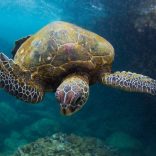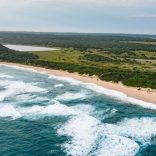Mozambique: Missaua water poisoned with Deltamethrin
A challenge for marine biodiversity conservation in Mozambique? Enforcement of laws, says WWF

International Dark-Sky Association (File photo) / For illustration purposes only
Enforcement of legislation and the development of environmental awareness in communities are key challenges in protecting marine biodiversity in Mozambique, the director of the non-governmental organization World Wildlife Fund (WWF) in Mozambique told Lusa.
“Although measures have been taken [at the level of legislation], we are still facing many challenges, especially in implementation,” Anabela Rodrigues said on the occasion of WWF’s 15 years in Mozambique, which coincided with the launch of the organisation’s report, “Revitalization of the Economy of the Western Indian Ocean”.
The adoption of a coordinated plan between the countries of the region with direct access to the Indian Ocean is pointed out by the director of the WWF as one of the main conditions for the effectiveness of strategies to protect marine life in the ocean, whose assets, according to the report, are estimated to be worth US$333.8 billion (more than EUR312 billion).
“We need to coordinate efforts on measures that governments must take to take advantage of marine resource in a sustainable way,” Rodrigues said, pointing to the difference in fish prices among the countries of the region as an example of one disadvantage resulting of the lack of a joint management strategy.
While noting that, from a global perspective, the Indian Ocean is “relatively good,” the WWF report warns that countries around the Indian Ocean depend heavily on marine resources that are already showing signs of decline, suggesting more concrete action for their conservation is required.

Regarding Mozambique, and in addition to implementation, Rodrigues says the internalization of a “conservation culture” is most important for preservation strategies, and that, for good results, awareness must extend to all social strata.
In its assessment, WWF also concludes that the livelihoods of the populations of the countries bordering the Western Indian Ocean are in many cases linked to marine resources, justifying the need for joint action to ensure sustainable exploitation.
The report also suggests investment in human resources, such as community member training programmes in ensuring the safety of endangered species.
According to the document, to ensure equitable access to social, environmental and economic benefits, it is necessary to create “enabling policies” that promote best practice in the countries bordering the Western Indian Ocean.
“Despite the relatively intact coastal and marine ecosystems of the Western Indian Ocean, there are increasing signs of wear and tear in many parts of the region,” the report concludes, warning, for example, that 50 percent of shark species assessed in the regions are in danger of extinction.
The Western Indian Ocean area covers over 30 million square kilometers, comprising, in addition to Mozambique, Reunion, the Comores, Kenya, Madagascar, Mauritius, Seychelles, Somalia, South Africa and Tanzania.
With a total coastal population of more than 220 million, the area comprises 8.1 percent of the global surface of the oceans, and is rich in marine biodiversity.












Leave a Reply
Be the First to Comment!
You must be logged in to post a comment.
You must be logged in to post a comment.